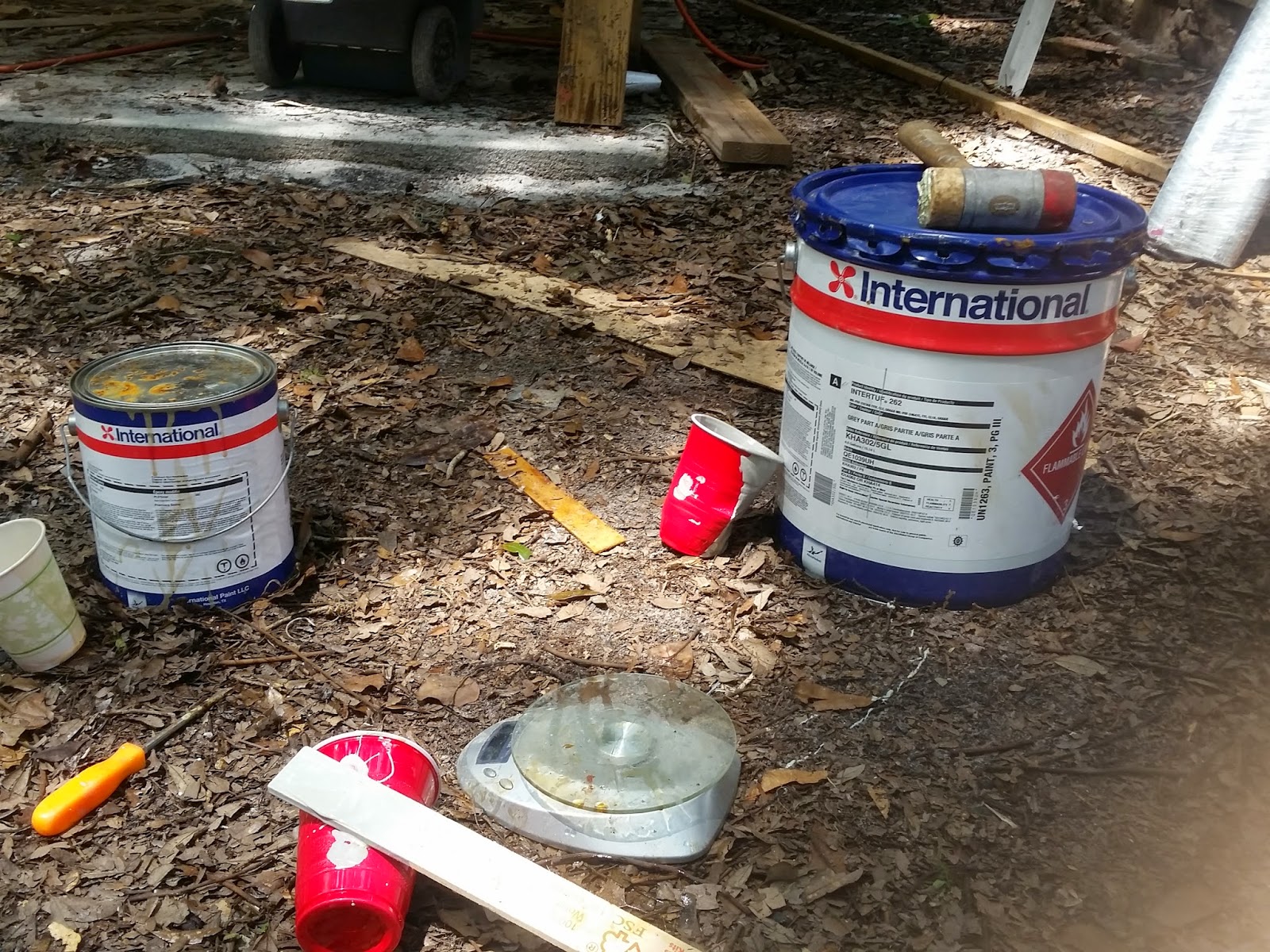What you see here is three 12 ft sections of 6061 T6 Aluminum tubing with a .083 wall thickness. Alro metals down in South Florida did not have the 2 1/2 inch tubing in stock, so I had these drop shipped to a buddy who has a sign shop near me. He orders alot of aluminum for signs anyway.
Yesterday, I went to his shop to pick them up. While there, right next to my order, was a brand new 20 ft flagpole. 3 inch base, thing of beauty, tapers as it goes up. The designers plans call for a 3 inch 12 footer and a 2 1/2 12 footer, inserted, shimmed and pop riveted. My buddy says to me " I think your going to have alot of stress where the 2 tubes overlap. I think you should just order a flagpole or, order a 24 foot tube of 3 inch 6061 T6.
So, I go inside his shop and call the flagpole manufacturer. They call back to say the flagpole is made of 6063 aluminum. I do a google search for 6061 vs 6063, and right quick I land on a forum for race car builders, where one asks about 6061 vs 6063. Everyone agrees 6063 is weaker. So, I kind of nix that idea. But, still, I kind of like the idea of a 24 ft piece of 6061, in either 3 inch or 2 1/2. If using the 2 1/2, go up to a wall thickness of .125 (1/8 inch)
Now, head all mixed up, I make a call to a buddy's younger brother, who graduated from Michigan state with a degree in Metallurgy ( applied engineering) So, this guy knows metal. I explain everything. He says he will call. I go to the office, as work seems to be interfering with the boat build. Plus the epoxy is drying anyway.
Around 5 30 pm. He calls. He calls, and he's up at the bar, just down the street, with his brother, says, come on down. I go to the bar, and he explains that he did some research on the matter and even went to a forum for engineers that had a section for mast building. He shows me some print outs showing that 6061 has an ultimate tensile strenght of 45,000 psi while the 6063 has an ultimate tensile strength of 35,000. 6063 is used for architectural and building products and is optimized for corrosion resistance, while 6061 is optimized for strength. 6061 has an ulitmate bearing strength of 88,000 psi and is some tough stuff.
He said the engineering forum stated that if the 6063 had a wall thickenss of .125, it could then be used, but that the 6061 at a wall thickenss of .083 is still superior, but that the flagpole could be used, assuming a wall thickeness of .125.
The sail plan I am using is an unstayed mast, so there is not alot of compression of the tubing, more like bending pressure. And, as the sail gets smaller as your approach the top of the sail, that bending pressure is less, presumably why the designer reduces tube size to 2 1/2 inch. In fact, perhaps that is done so that the mast does bend, in order to spill wind. So, maybe the 24 foot tube of all 3 inch would be worse than a 3 inch joined to a 2 1/2.
By the way, each of the 3 twelve foot tubes weighs almost exactly 10 lbs, so a 24 ft mast should weigh less than 20 lbs assuming that I join a 2 1/2 section for the top of the mast.
The crossbeams on the main hull will be the 6061 12 footers, for sure.

















































